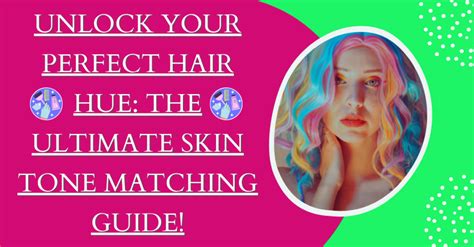Do you often find yourself staring at a hair color chart, overwhelmed by the endless options? Don’t fret! This comprehensive guide will provide you with the tools and insights you need to find the perfect hair color match.

Understanding Your Skin Tone
The first step towards finding your ideal hair color is to determine your skin tone. There are three main skin tone categories:
- Cool: Characterized by pink, bluish, or reddish undertones.
- Warm: Features golden, peachy, or yellowish undertones.
- Neutral: A balance of both cool and warm undertones.
Ash vs. Gold: The Battle of Undertones
Hair colors can be further classified into two broad categories: ash and gold. Ash tones have cool undertones, while gold tones have warm undertones.
- Cool (Ash) Undertones: Ideal for cool skin tones to enhance the pink, bluish, or reddish hues.
- Warm (Gold) Undertones: Flattering for warm skin tones to complement the golden, peachy, or yellowish hues.
Demystifying Color Levels
Hair color levels are indicated by numbers ranging from 1 to 10, with 1 being the darkest (black) and 10 being the lightest (blonde). The level you choose should complement your skin tone and natural hair color.
- Dark Skin Tones: Levels 1-5 (black, brown)
- Medium Skin Tones: Levels 6-8 (light brown, blonde)
- Light Skin Tones: Levels 9-10 (blonde)
Color Matching Techniques
1. The Eye Test: Observe the color of your irises and veins. If your eyes have green or blue hues and your veins appear blue or purple, you likely have a cool skin tone. If your eyes are brown or hazel and your veins are green, you probably have a warm skin tone.
2. The Jewelry Test: Wear gold jewelry if you have warm skin tones and silver jewelry if you have cool skin tones. Notice which metal complements your skin better.
3. The Paper Test: Hold a white piece of paper next to your face. If your skin appears pink or bluish, you have a cool skin tone. If your skin looks yellow or golden, you have a warm skin tone.
Choosing the Perfect Hue
Now that you have a better understanding of your skin tone and the different hair color categories, it’s time to narrow down your choices.
- Cool Skin Tones: Ash blonde, platinum blonde, burgundy, dark chocolate brown
- Warm Skin Tones: Golden blonde, caramel blonde, strawberry blonde, warm browns
- Neutral Skin Tones: Can wear both cool and warm tones, such as ash brown, beige blonde, or even rose gold
Tips for Enhancing Your New Hair Color
1. Maintain a Healthy Hair Routine: Regular washing, conditioning, and deep treatments will keep your hair healthy and vibrant.
2. Touch Up Regularly: As your hair grows, your roots will start to show. Regular touch-ups will keep your hair color looking fresh.
3. Use Color-Protecting Products: Shampoos, conditioners, and hair masks designed for color-treated hair will help preserve the vibrancy of your color.
4. Protect Your Hair from the Sun: UV rays can fade hair color, so wear a hat or scarf when spending time outdoors.
5. Embrace the Change: Remember that changing your hair color is an opportunity to express yourself and embrace a new look. Enjoy the process and don’t be afraid to experiment!
Frequently Asked Questions
Q: How often should I color my hair?
A: The frequency of your hair color appointments depends on the type of hair color, your hair growth rate, and the desired look.
Q: Is it better to dye hair lighter or darker?
A: Going lighter requires bleaching, which can damage hair. However, dyeing hair darker is generally safer and easier to maintain.
Q: What is the best hair color for my skin tone?
A: Refer to the sections above regarding skin tone and hair color categories to find the most flattering hues for your skin.
Conclusion
Finding your perfect hair color match is a journey of exploration and experimentation. By understanding your skin tone, hair type, and personal preferences, you can achieve a hair color that enhances your natural beauty and boosts your confidence. So, embrace the world of hair color and find the hue that sets your soul alight!
